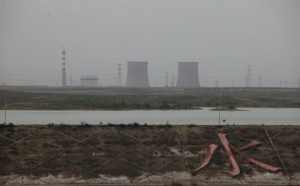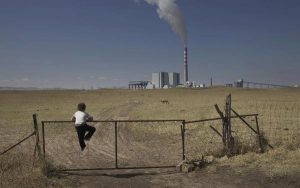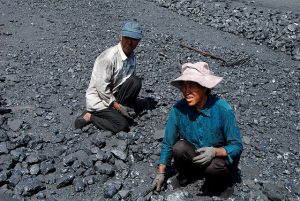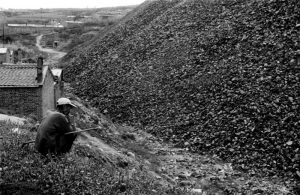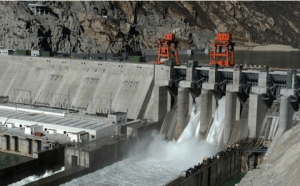China will fail in its pledge to ensure greenhouse emissions peak by 2030 unless western provinces rein in building of new coal-fired power plants and prohibit coal gasification projects.
The ability of the world’s largest emitter to halt, and reverse, the rise in its use of coal is in sharp focus as delegates prepare for UN climate talks in the Peruvian capital, Lima, next week.
At the two-week talks, countries will be scrutinising each other’s pledges and commitments, and the detail on action and targets will be formalised in national submissions to the UN. Those are due by March 2015, ahead of the Paris climate summit in December next year.
The Paris gathering of world leaders will aim to deliver a global climate deal that covers all major emitters including China, thereby avoiding a repeat of the failure of the Copenhagen summit in 2009, which dissolved into rancour over which countries should take on the most burdensome emissions cuts.
China’s pledge to cap coal use at 4.2 gigatonnes (Gt) by 2020, part of a joint announcement with the US in mid-November, is viewed by analysts as achievable because of slower economic growth, shutdowns of overcapacity in steel and cement, anti-smog measures and an increasing share of renewables in newly-built power capacity.
China consumed 3.6Gt of coal in 2013, according to official figures. However, growing demand for power means meeting the 2020 coal cap will be difficult without strong action to reduce coal’s share of the energy mix, say some observers.
“The 2020 coal cap is aggressive and requires significant policy and regulatory support and enforcement, yet it is not beyond reach. Also, it is critical to note that the 2020 cap does not mean “peak,” and what happens after 2020 will be really interesting to watch,” says Ayaka Jones, a coal analyst with the US Environmental Information Agency.
To meet the 2020 cap on coal and honour an attendant pledge to reduce greenhouse gas emissions after 2030, local policymakers in China’s interior will most likely need to curb future coal demand. So far, they have have encouraged coal-fired electricity to help power economic growth and maintain employment.
Coal capacity migrates west
One of China’s main challenges will be to slow the building of new ‘mine mouth’ coal-fired capacity in resource-rich northern and western provinces. In these resource-rich but economically poor areas, power stations are increasingly being built for industries relocating from the east, and to provide big coastal cities with electricity transmitted along vast corridors of super-efficient power lines.
Chinese energy companies are also planning to build huge facilities to turn coal into gas, a process that is highly carbon intensive but may be prohibited because of potential impacts on scarce water supply.
For provinces such as Inner Mongolia and Shanxi, where mining is a major employer and the industry enjoys strong political patronage, policymakers will have to decide what measures will be required to fulfil the wishes of central government in Beijing.
Most of the China’s coal-producing provinces, where many new coal-fired power plants are likely to be built, are not yet covered by pilot emissions trading schemes or localised caps.
“There are numerous unanswered questions (which also seem to be under debate) including how much of the bill will consumers have to foot?” says Michal Meidan, a specialist on Chinese energy issues with Chatham House. “How will industrial consolidation impact growth and employment in provinces that are already vulnerable to slower economic growth? Can pricing and subsidy mechanisms evolve fast enough to support this structural change?”
“The mandate (from central government) was clear, and provinces and industry will just have to figure it out,” she adds.
Growth curve
Another major question is whether the trends that are helping to limit growth in demand for coal-fired power will be enough to ensure that a 2020 cap in coal consumption translates to a peak around the same time.
Some experts point out that that a renewed upturn in economic growth and rise in demand for electricity – meaning higher utilisation of newly-built coal plants – could see coal demand pick up speed again in the 2020s, thwarting moves to cap China’s CO2 emissions, most which are related to the burning of coal.
"This year’s economic growth is very slow, and is a special case, when a lot more companies have stockpiled coal. After this digestion of inventories is complete, demand for coal may increase again," Lin Boqiang, director of the Energy Research Center of Xiamen University, was quoted as saying by the 21st Century Business Herald.
A recent note from US investment bank Citi said China would only be likely to achieve peak emissions earlier than 2030 if this year’s sharper-than expected slowdown becomes a long-term trend, along with a transition away from highly polluting energy-intensive sectors.
“If China’s growth were still at 8% per year, only a seemingly modest increase from the current 6-7% range, achieving peak emissions before 2030 would be difficult and costly,” says Citi analyst Tony Yuen in the report.
For China’s coal consumption to peak around the turn of the decade will require most new energy builds to be renewables, nuclear or gas, and enable these be connected to grids quickly. Some observers point out that the trend is already in motion, as installed capacity in hydro, wind and solar outstripped thermal energy sources for the first time in 2013.
China’s central government has set out a requirement for around 35% of China’s power generation to be based on CO2-free sources, mainly renewable energy, up from the 22% that carbon-free sources currently contribute. This target could go a long way to helping China cap coal use, points out Lauri Myllyvirta, an energy analyst with Greenpeace.
“Put another way: every month, between now and 2020 (and up to 2030), the clean energy additions need to equal about three large coal-fired power plants. We are confident that given the right policies, including full grid access for renewable energy producers, the target can be achieved,” he says.
